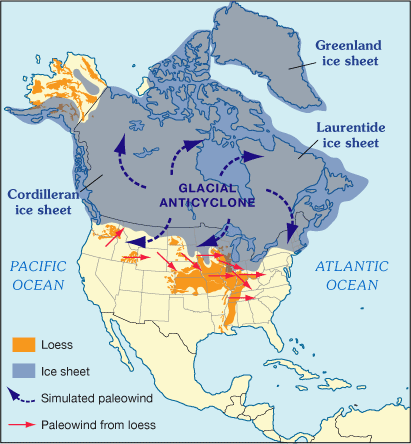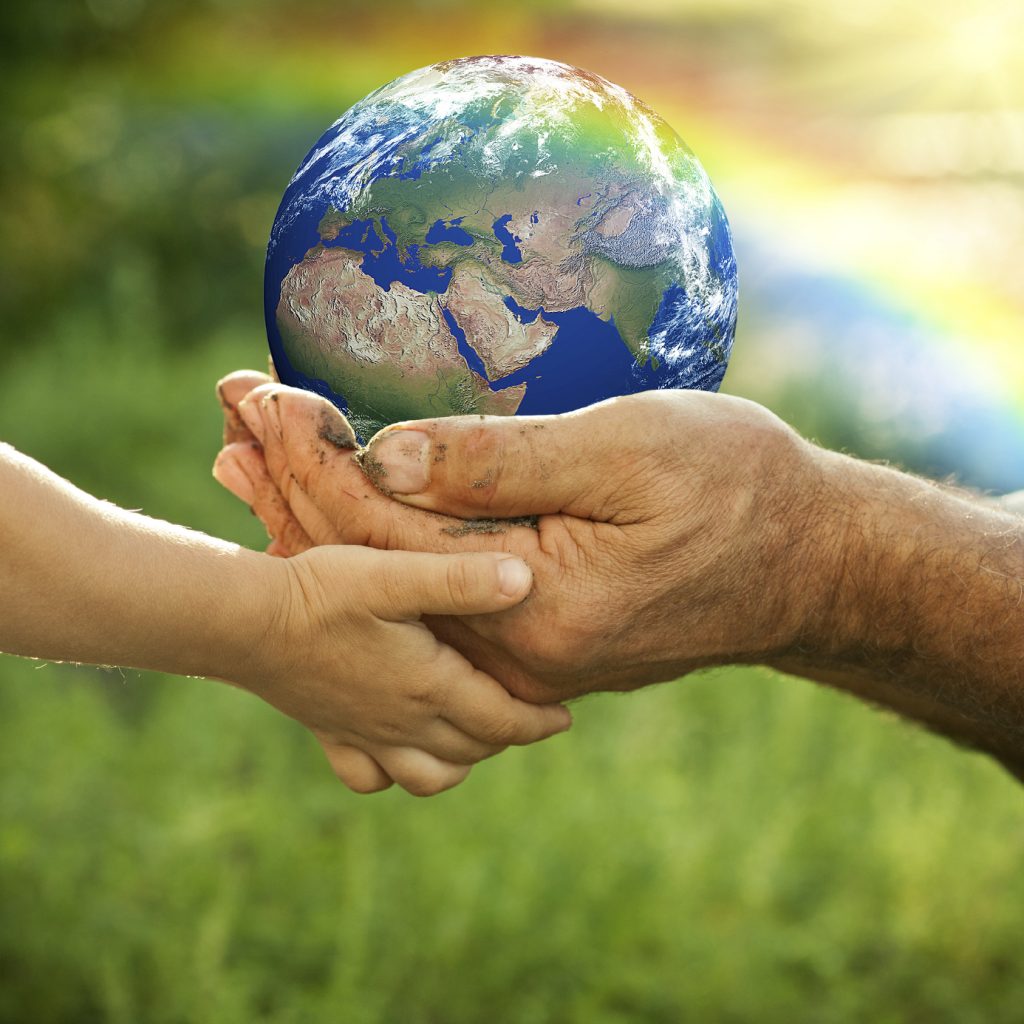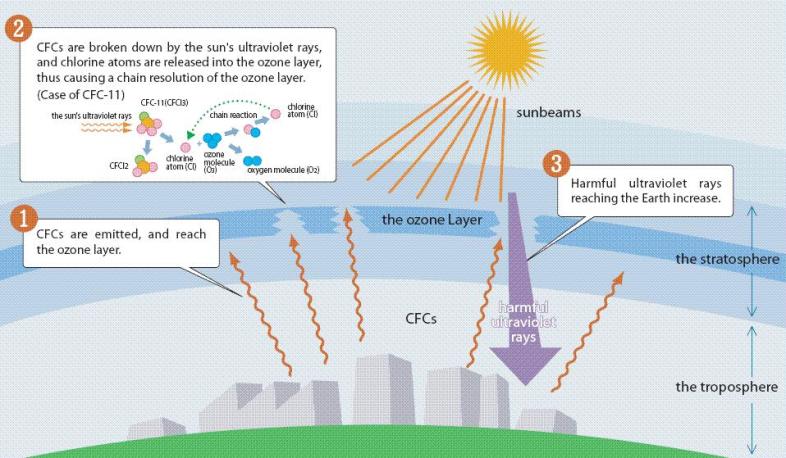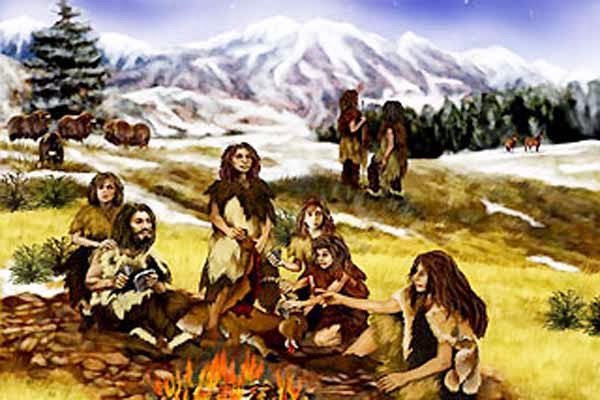Why I stand with science?
We need to ask more ‘why’ questions?
This post was inspired by comments on a Facebook related to the news headline, Clear and unequivocal: Thousands of scientists sign letter on the climate crisis. What I’ve tried to do in the following post, is distinguish between the concepts of “global warming” and “climate change”.
To often these terms are used interchangeably and that leads, I think, to a great deal of confusion. It also plays into the hands of skeptics who scoff at the concept of “climate change” as being nothing more than something caused by a cyclical variance in the weather patterns. Scientists, on the other hand, have focussed their attention on “global warming”.
1. First, let’s talk about the history of global cooling and warming?
It’s generally agreed the earth’s surface temperature has changed considerably over the last 12,000 to 15,000 years. Indeed, while it has been changing throughout history and pre-history, in this post I only reference the recent history of the western hemisphere. It starts with an ice age that covered what is much of that which is Canada today. Take a look at Vancouver Island (sketch below) – that was us, then.
During the Ice Age, the Earth’s average temperature was about 12 degrees Fahrenheit (6.7c) colder than it is today. That was enough to keep snow from melting during the summers in northern regions. As snow fell on the snow, glaciers formed. (NASA Earth Observatory)
As noted, it did not take much of a change to bring about an ice age. After that ice age receded, we now inhabit the land our aboriginal ancestors settled as the ice pulled back. It’s hard to even conceive that Canada was covered with ice so recently. While climatic conditions remained fairly stable over the last 10,000 years, the preponderance of scientific evidence now suggests we are in a time of rising, average, global temperatures.
As the Earth moved out of ice ages over the past million years, (the most recent being that referenced here) the global temperature rose a total of 4 to 7 degrees Celsius over about 5,000 years. In the past century alone, the temperature has climbed 0.7 degrees Celsius, roughly ten times faster than the average rate of ice-age-recovery warming. (Link above)
While the fact the ice age happened is well established by science, what caused  it remains theoretical? One theory holds that a repositioning of the earth on its axis and in its orbit, perhaps caused by a meteoric impact, or by a shift in the earth’s mantle is what caused the change. I don’t know the answer, but I’m satisfied it happened and that scientists can tell us much about the results including the effects on humans.
it remains theoretical? One theory holds that a repositioning of the earth on its axis and in its orbit, perhaps caused by a meteoric impact, or by a shift in the earth’s mantle is what caused the change. I don’t know the answer, but I’m satisfied it happened and that scientists can tell us much about the results including the effects on humans.
The earth sciences of today have collectively made enough observations of events of the last 15,000 thousand years to reasonably postulate we are in a time of accelerated global warming and that this warming will lead to significant changes in our climate. While the nature of the change we face is subject to debate, it does seem probable life on earth will be significantly impacted just as it was back in that long-ago ice age. Had there been ice-age-deniers back in the day, I suppose they would have held that the cold they experienced was just another part of a regular climatic cycle. That’s fair enough, but what is the impact on the human condition during periods of cooling and warming?
While the human population was clearly affected by the most recent ice cycle, enough of the planet remained ice-free so that humans, along with a large percentage of plants and other animals, survived. Perhaps the same will happen in the present warming period, however, we might well pay a much higher price in the world of today.
Part of the reason the effects of global warming in this century will be much greater is that we now have 7.7 billion people as opposed to the 300 million 2000 years ago, and, perhaps, 10 million during the ice age. Some even suggest that what needs to happen in order to correct the present situation, is a mass die-off (not necessarily an extinction) of humans. How the earth might recover following a significant drop in population is presented in the YouTube video, What Would Happen
It always strikes as particularly egocentric to think that the loss of humans would be the end of life on earth. It wouldn’t and other forms of life would likely thrive when we disappeared or were greatly reduced in number. Of course, my preference is that we humans stop abusing the planet. However, I’m equally certain that we, the rich people of the earth, do not want to give up our high standard of living in favour of protecting the planet and other species from greater harm.
At this point, we are the only species that holds so much of the earth’s fate in our hands. No other species has ever held such power over the life and death of others, and the explosion in our populations speaks to the challenges we face.
 Today, we have established cities, towns and vast areas of agriculture and industry in areas that are highly susceptible to the changes that will follow global warming of only a few degrees. A rise in sea-level, say one or two meters, will have a massive impact on low lying land. Millions of hectares of agricultural land and forest could be destroyed by flood, fire, and drought. Part of the reason for the exaggerated effect is that we can’t just pack up and move billions of people and their means of support to more hospitable locations as did the hunters and gatherers of the ice age. Even then, the ice age people were likely heavily impacted by the changes they encountered and it seems likely a large part of the population met an early death.
Today, we have established cities, towns and vast areas of agriculture and industry in areas that are highly susceptible to the changes that will follow global warming of only a few degrees. A rise in sea-level, say one or two meters, will have a massive impact on low lying land. Millions of hectares of agricultural land and forest could be destroyed by flood, fire, and drought. Part of the reason for the exaggerated effect is that we can’t just pack up and move billions of people and their means of support to more hospitable locations as did the hunters and gatherers of the ice age. Even then, the ice age people were likely heavily impacted by the changes they encountered and it seems likely a large part of the population met an early death.
2. As the earth warms, climate change will follow
Someone, perhaps a climate-denier, made a list of 120 statements about how climate change warnings have been present every year for the past 120 years. There is no question such headlines greeted us with great regularity, yet those headlines didn’t have any real meaning beyond pointing to single events? Actually, they didn’t prove much of anything other than the weather took a nasty turn just as it did with the cold snap in Edmonton this past weekend. People seem to always be searching for record breakers.
News media and others also make the most out of events like the recent wildfires in California and Australia or the floods, hurricanes, and typhoons in other parts of the world. It is often stated these events are evidence of climate change but that’s not what the science of global warming is about. Sure climate change will likely follow a rise in global temperature (as it did in the ice age when it dropped), but weather events themselves are just weather events. You’d have to dig deeper to understand what was happening and more importantly “why” it is happening. That’s where we need to trust in our scientists.
What science looks for are long term trends that support a theory (e.g. the earth is warming and that could lead to increasingly harsh environmental events). A single weather event, however destructive, proves nothing unless it was truly catastrophic as would be the case if much of the rice-growing area of China, Viet Nam (1), India, or other areas was destroyed by saltwater intrusion. Or if all the boreal forest in Canada was to go up in flames. I rather suppose global warming accompanied by escalating climate events, is more of an evolutionary process except with global warming the timeline is considerably truncated. Let’s look at a different but related example, that of involving the ozone layer.
3. The loss of the Ozone Layer
Back in the 1970s, scientists theorized that certain chemical reactions might lead to ozone depletion. This, in turn, they postulated, would  cause serious damage to an area of our atmosphere that protects us from UV rays. By 1985 the science was settled – unrestricted use of CFCs (Chlorofluorocarbons) was largely responsible for causing much of that depletion. It did not take long for many countries to start banning CFCs and, today, data suggests this change has helped to slow the destruction of our life-protecting the ozone layer. I wonder what would have happened if the ozone-deniers had prevailed back in the 1980s? This from an article titled, The Skeptics vs the Ozone Hole:
cause serious damage to an area of our atmosphere that protects us from UV rays. By 1985 the science was settled – unrestricted use of CFCs (Chlorofluorocarbons) was largely responsible for causing much of that depletion. It did not take long for many countries to start banning CFCs and, today, data suggests this change has helped to slow the destruction of our life-protecting the ozone layer. I wonder what would have happened if the ozone-deniers had prevailed back in the 1980s? This from an article titled, The Skeptics vs the Ozone Hole:
Critics and skeptics–primarily industry spokespeople and scientists from conservative think tanks–immediately attacked the theory. Despite the fact that Molina and Rowland’s theory had wide support in the scientific community, a handful of skeptics, their voices greatly amplified by the public relations machines of powerful corporations and politicians sympathetic to them, succeeded in delaying the imposition of controls on CFCs for many years.
However, the stunning discovery of the Antarctic ozone hole in 1985 proved the skeptics wrong. Human-generated CFCs were indeed destroying Earth’s protective ozone layer. In fact, the ozone depletion was far worse than Molina and Roland had predicted. No one had imagined that ozone depletion like the 50% losses being observed by 1987 over Antarctica was possible so soon.
Despite the continued opposition of many of the skeptics, the Montreal Protocol, an international agreement to phase out ozone-destroying chemicals, was hurriedly approved in 1987 to address the threat.
While we are not yet in the clear with respect to preserving and protecting the ozone layer, we seem to be on the right path. But, are we on the right path with respect to global warming? Scientists don’t think so as there are still far too many critics and skeptics, people in positions of power like the President of the United States, who continues to deny the science.
While no argument will win over the climate-deniers, the good news is that the majority of people in a reasonably large number of countries are satisfied we face a serious (perhaps catastrophic) challenge with respect to climate-related events unless we mend our ways. What we don’t yet have is the political will to make the major changes needed, and while we are moving in the right direction – the progress is far to slow. The question is, can we make that move soon enough and strong enough to change the outcome?
Regards
Harold McNeill
(1) Following is an excerpt from Part 6 of a Travelogue from Viet Nam:
Where the Mekong flows into the Delta, a backflow of saltwater from the South China Sea can reach 50 km. inland and in one instance two years ago the inflow stretched 100 km. That salt flood killed thousands of acres of rice and other field crops.
While the annual flush from heavy rains upstream tended to clear smaller, annual, saltwater intrusions, during the flood season, the continued building of dams in the upper reaches of the Mekong, is slowly lowering the seasonal differences in water level and that is forcing many riverbank farmers off their traditional land. The reason, a lack of flooding is blocking over 80% of silt that provides nutrients, the lifeblood of the lower Mekong.
(400)
Trackback from your site.

